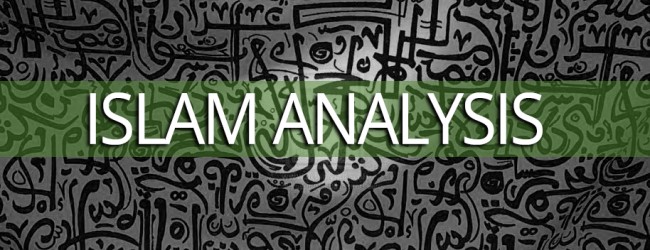
Published on SciDev.Net on 11 April 2012
Several Muslim countries rank among the world‘s most efficient innovators. They must build on this success, says Athar Osama.
Ever since the global business school INSEAD (Institut Européen d’Administration des Affaires) started producing the Global Innovation Index reports in 2007, Islamic countries have performed rather unremarkably.
In the last three years, for instance, the top-3 performers have been the United Arab Emirates (ranked 24th for 2009-10), Qatar (24th in 2008-9) and Malaysia (31st in 2011).
Perhaps unsurprisingly, the top ten among Islamic countries are predominantly oil-rich economies — fuelling perceptions that there is little to write home about when it comes to innovation in the vast majority of the Islamic world.
However, there is something remarkable about the latest version of the Global Innovation Index (GII) report in that it puts into practice one of the canons of measurement: that one must not compare apples and oranges. And that inputs and outputs alone do not tell the whole story.
Efficient innovators
In 2011, the GII used 80 different indicators of innovation, grouped into seven categories, to rank countries according to inputs, outputs, and overall innovative performance.
But it also introduced a new marker: the Innovation Efficiency Index, which takes a simple ratio of the innovation output and innovation input indices — and captures, among other things, “achieving more with less”. It also provides “an insight [into innovative performance] that should be neutral to development stages of the country”, notes the report.
The results have pleasantly surprised many in the Muslim world. Four Islamic countries turn up in the top ten most efficient innovators in the world. Three of these — Nigeria (ranked 2nd), Pakistan (ranked 4th), and Bangladesh (ranked 10th) — are populous nations that belong to the lower middle-income group.
Côte d’Ivoire, a mid-sized Organisation of Islamic Cooperation (OIC) member country of 20 million people, tops the world rankings.
Islamic countries also tend to rank better when grouped according to income levels. Qatar ranks 5th among high-income countries; Iran, Lebanon and Turkey rank 5th, 6th and 7th in the upper middle-income group; and Bangladesh (1st) and Tajikistan (2nd) lead the low-income countries worldwide.
One could delve deeper into this treasure trove of information to find that, for example, Pakistan ranks higher in creative output than scientific output.
Clearly these results provide the Islamic world with not only something to cheer about, but also an opportunity to explore the reasons behind these success stories and how to build on them.
Despite their state of development, several countries must be doing something right somewhere. But what?
Evidence from elsewhere
Some evidence is emerging from the Atlas of Islamic-World Science and Innovation — a three-year partnership between the OIC and the Royal Society in the UK, and several other donors — which is conducting in-depth studies of science and innovation in up to 15 Islamic countries.
Throughout much of 2010, the study team for Pakistan, which I lead, combed through the country’s 65-year history to look for instances of innovation across eight different sectors of the economy.
The definition of innovation was broad enough to include not only scientific knowledge but also business model innovation, social innovation and reverse engineering.
Over 200 examples were identified and vetted by specialists in the relevant sector to identify the most promising and effective innovations. These included anything from locally developed biofertiliser to genetically modified, pest-resistant cotton, developed using genetic material from the venom of an Australian spider, to entrepreneurial success in information technology and the defence industry.
The result is a rich tapestry of case studies and anecdotes that hardly justifies the stereotype of Pakistan as lacking in scientific ingenuity.
The Pakistan Atlas report, due to be released later this year, should spur a more detailed and systematic effort to understand the nature of innovation in the country.
What both this and the GII report highlight is the remarkable resilience of societies where innovation blossoms despite a dearth of resources, effective policy and governance.
There is a common adage: “Pakistan is a country that thrives despite its government, not because of it.” This is a challenge common to most Muslim countries.
Platform for deeper analysis
The outcome of the Innovation Efficiency Index throws open as many, if not more, questions as it can answer. While quantitative statistics provide easy comparisons, they have the downside of decontextualising the findings, so are little use to the policymaker.
The numbers hide complex realities. For example, a slightly modified definition for innovation can produce different results in different contexts. And what may be considered relatively mundane in one country may be an extremely innovative development in another.
The numbers and indices produced by the GII consortium merit a more detailed analysis supplemented by a richer, more qualitative understanding of the circumstances of each country.
This may entail taking a small number of countries to develop a fine-grained understanding of how particular scores are formed and what factors enable or hinder innovative performance.
The GII report provides an exciting platform on which policy practitioners and scholars can build to better understand, engage with, and influence innovation in the Islamic world.

Athar Osama is a London-based science and innovation policy consultant. He is the founder and CEO of Technomics International Ltd, a UK-based international technology policy consulting firm, and founder of localhost/muslim.
You must be logged in to post a comment.